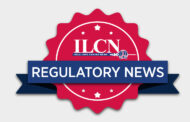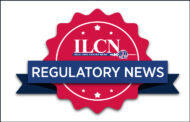By Erik J. MacLaren, PhD
Liquid Biopsy Testing
On June 1, 2016, the U.S. Food and Drug Administration (FDA) approved the use of the cobas EGFR Mutation Test v2 to detect mutations in the epidermal growth factor receptor (EGFR) gene using patient plasma samples. IASLC Lung Cancer News spoke with Reena Philip, PhD, Director of the Division of Molecular Genetics and Pathology, and Eunice Lee, PhD, Chief of the Molecular Pathology and Cytology Branch, both in the Office of In Vitro Diagnostics and Radiological Health in the Center for Devices and Radiological Health, about the new liquid biopsy test.
Q: Can you explain for our readers what the cobas EGFR Mutation Test v2 is and how it works?
Philip: This is a polymerase chain reaction (PCR)- based test for detecting exon 19 deletions or L858R substitution mutations in EGFR in patients with non-small cell lung cancer to determine whether they are eligible for treatment with erlotinib. Previously, this test had been approved for use with formalin-fixed paraffin-embedded (FFPE) tumor specimens, and this new approval concerns its use with cell-free DNA (cfDNA) in plasma specimens, also known as “liquid biopsies.” The only caveat is that testing with plasma samples is to be considered reflex testing because the percent positive agreement (PPA) between tissue and plasma samples was low, 76.7%. This means that if EGFR mutations are detected in patients’ plasma samples, then the patients are eligible for treatment with erlotinib; however, if no mutations are detected, patients are still advised to go through the tumor tissue testing.
Q: Why would there be disagreement between testing results from tissue and plasma?
Philip: It is believed that the tumor cells shed cfDNA into the blood, and that tumor DNA can be detected by these devices in plasma samples only if there are sufficient amounts. That is why we think that around 77% PPA is reasonable, because perhaps for patients with early-stage disease, there will not be enough tumor DNA in the blood to be detected.
Q: How did the FDA arrive at the conclusion that this liquid biopsy is “ready for prime time”?
Philip: The approval was based on the totality of the data, including the device data and the results that were submitted by Astellas (Pharma Technologies) and Roche (Molecular Systems). These results supported the safety and effectiveness of the device for testing plasma samples. The data are available online in a document called the Summary of Safety and Effectiveness Data (SSED).1 Section 10 of that document shows data provided from the ENSURE trial that were used to support the cfDNA clinical claims.
Lee: In general, deciding which test to use should depend on the performance of the device and the claims that are associated with the device. In this case, as Dr. Philip mentioned, the PPA for the cobas EGFR test is about 77%, so it is important to have that reflex claim, whereby patients in whom mutations were not detected are then tested using tissue biopsy samples in order to determine their eligibility for erlotinib treatment.
Q: Are there pitfalls we need to avoid with liquid biopsy testing?
Lee: Right now, there is a lack of clinical data on treatment responses in patients identified by liquid biopsies. Companion diagnostic tests have been approved to detect mutations in tumor samples, and the clinical data used was based on tumor tissue testing. However, there is not perfect concordance between the tumor tests and the plasma tests. It is unclear how the patients who are identified by the plasma test would respond to the treatment, which was approved based on tumor testing. So it is important to get some clinical data that are associated with the plasma test.
Q: Is there anything else you would like to share with our readers?
Lee: I would add that the cobas EGFR test offers a minimally invasive alternative to tumor testing, particularly for patients who have positive results, and it avoids challenges that are associated with tumor biopsies like safety concerns and getting insufficient amounts of sample. However, it is key for the safe and effective use of these tests to establish the performance of the devices and to understand the risks that might be associated with how they are used. Therefore in this case, patients with negative results are reflexed to tumor testing, and would still have to undergo the tissue biopsy procedure.
Philip: I agree that liquid biopsies will allow for the analysis of cfDNA in a relatively non-invasive manner and have the potential to significantly advance personalized medicine. On July 19, 2016, a workshop called Liquid Biopsies in Oncology Drug and Device Development was co-hosted by the FDA and the American Association for Cancer Research (AACR).2 We discussed some of the issues underlying liquid biopsies and some of the analytical issues we briefly touched on earlier.
References
1. U.S. Food and Drug Administration. Summary of Safety and Effectiveness Data for cobas® EGFR Mutation Test v2. 2016. Click here. Accessed July 2, 2016.
2. U.S. Food and Drug Administration. Public Workshop – Liquid Biopsies in Oncology Drug and Device Development, an FDAAACR public workshop, July 19, 2016. 2016; Click here. Accessed July 2, 2016.





